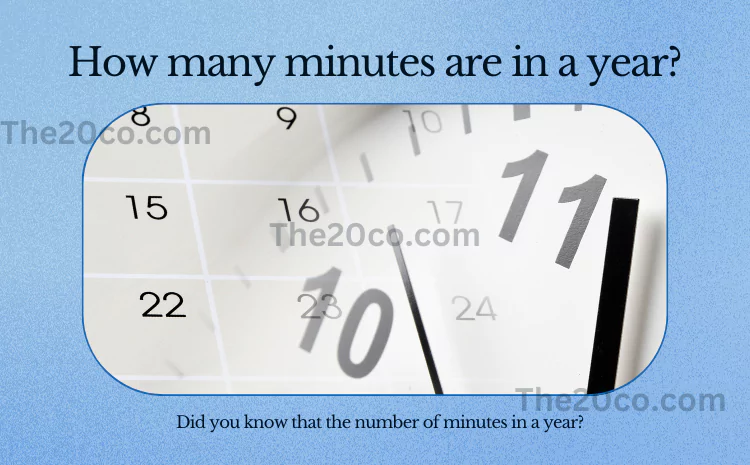Have you ever wondered just how many minutes there are in a year? The calculation may seem straightforward, but there’s more to it than meets the eye. In this exploration of time, we’ll delve into the intricacies of the minutes in a year, including leap years, the number of minutes in an hour, and the fascinating calculations that determine our units of time.
Calculating the Basics: Minutes in an Hour, Hours in a Day
Let’s start with the fundamentals. An hour consists of 60 minutes, and a day has 24 hours. To find out how many minutes there are in a day, you simply multiply these two values: 60 minutes/hour×24 hours/day=1440 minutes/day60 minutes/hour×24 hours/day=1440 minutes/day.
Breaking Down the Year: 365 Days and Leap Years
What is a Leap Year, and How Does it Affect the Calculation?
A leap year, occurring approximately every four years, adds an extra day to our usual 365-day calendar. This extra day compensates for the fact that Earth’s orbit around the sun takes about 365.2425 days. The leap year has 366 days, and to calculate the minutes in a leap year, we use the formula: 366 days/year×1440 minutes/day=527040 minutes/year366 days/year×1440 minutes/day=527040 minutes/year.
Common Year and Its 365 Days
In a common year with 365 days in a year, the calculation is straightforward: 365 days/year×1440 minutes/day=525600 minutes/year365 days/year×1440 minutes/day=525600 minutes/year.
Unveiling the Leap Seconds and Extra Hours
Understanding the Additional Time: 365.2425 Days in a Year
The Earth’s orbit around the sun takes approximately 365.2425 days. This fractional day may seem negligible, but over the years, it accumulates, leading to the need for leap years to keep our calendars in sync with astronomical events.
The 5 Hours, 48 Minutes, and 46 Seconds Mystery
To be precise, Earth takes about 365 days, 5 hours, 48 minutes, and 46 seconds to complete one full orbit around the sun. This detailed calculation ensures that our calendars remain accurate over the long term.
Diving Deeper: Minutes in a Month and Seconds in a Year
How Many Minutes in a Month?
With the variation in the number of days per month, determining the exact number of minutes in a month requires considering each month individually. For instance, multiplying the average number of days in a month (around 30.44) by 1440 minutes yields an approximate value of 43829.6 minutes.
Counting the Seconds in a Year
For the precision enthusiasts, let’s not forget the seconds. There are 60 seconds in a minute, so the total seconds in a year can be found by multiplying the minutes in a year by 60: 525600 minutes/year×60 seconds/minute=31536000 seconds/year525600 minutes/year×60 seconds/minute=31536000 seconds/year.
Solar Year and Its Influence
Exploring the Solar Year
The solar year, often referred to as a tropical year, is the time it takes for the Earth to complete one full orbit around the sun. It’s our standard unit for measuring a year in terms of the seasons. The exact duration of a solar year is approximately 365.242189 days.
How Many Minutes in a Solar Year?
To find out how many minutes there are in a solar year, we multiply the minutes per day by the number of days in a solar year: 1440 minutes/day×365.242189 days/year=525949.2 minutes/year1440 minutes/day×365.242189 days/year=525949.2 minutes/year.
Conclusion: Summing Up Time
The calculation of how many minutes are in a year involves considering various factors, from leap years and common years to the precise duration of Earth’s orbit around the sun. By understanding these elements, we gain insight into the intricacies of time measurement.
Key Takeaways
- A common year has 525600 minutes, while a leap year has 527040 minutes.
- Earth’s orbit around the sun takes about 365.2425 days, leading to the need for leap years.
- The solar year, based on Earth’s orbit and seasons, lasts approximately 365.242189 days.
So, the next time you find yourself pondering the many minutes in a year, you’ll have a deeper understanding of the fascinating calculations that govern our measurement of time. Whether it’s the precision of seconds or the grandeur of a solar year, time remains one of the most intriguing aspects of our existence.

